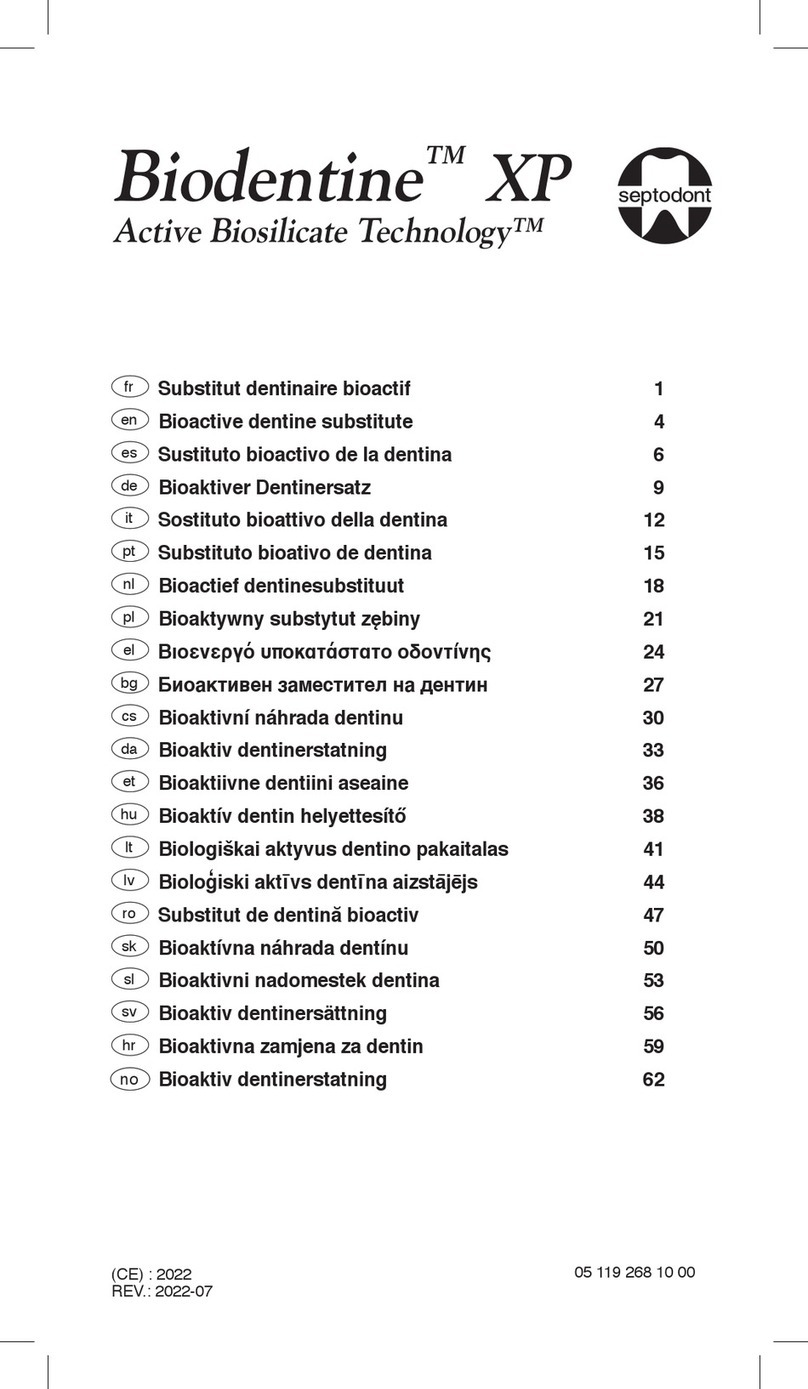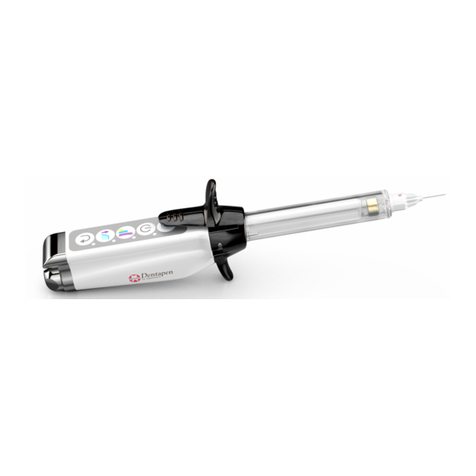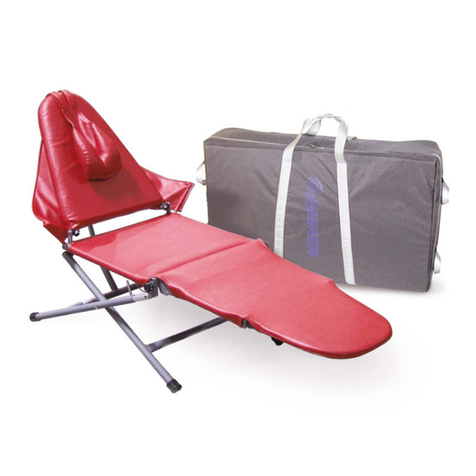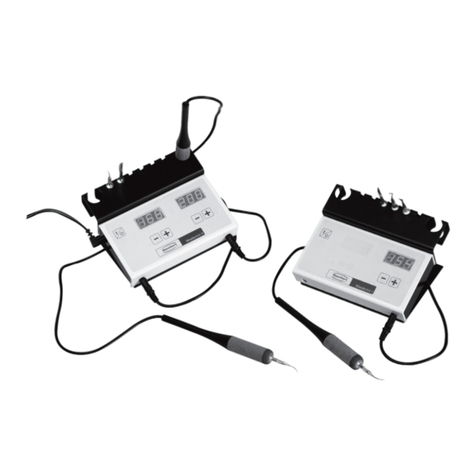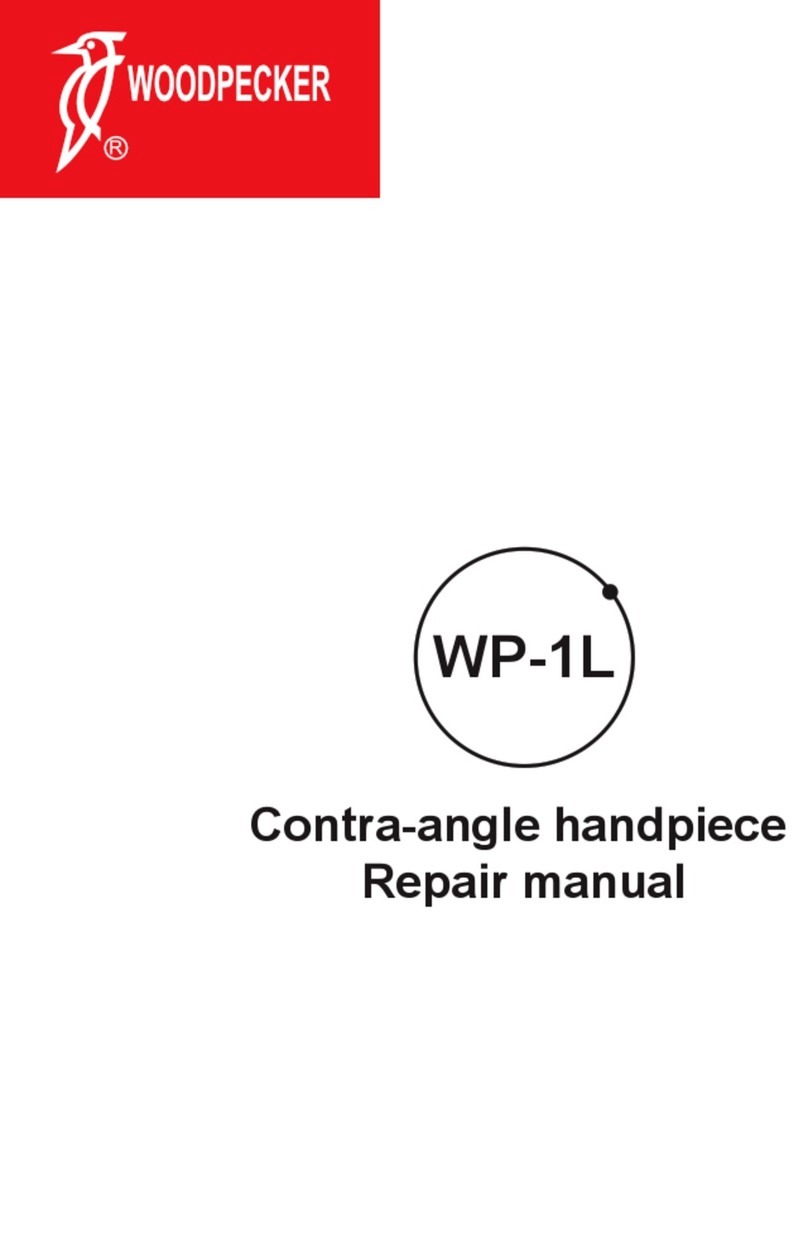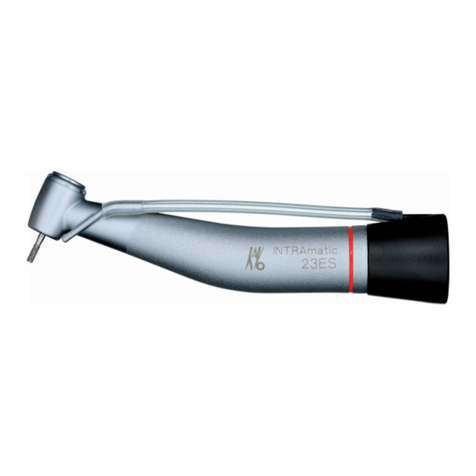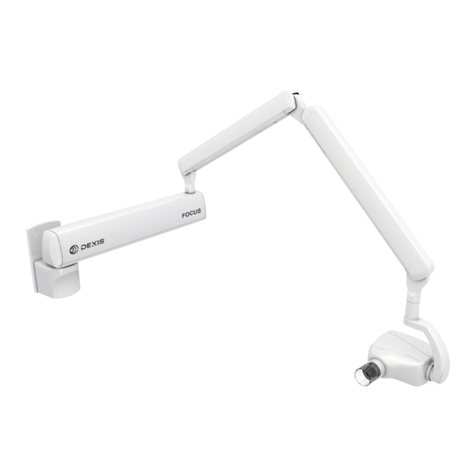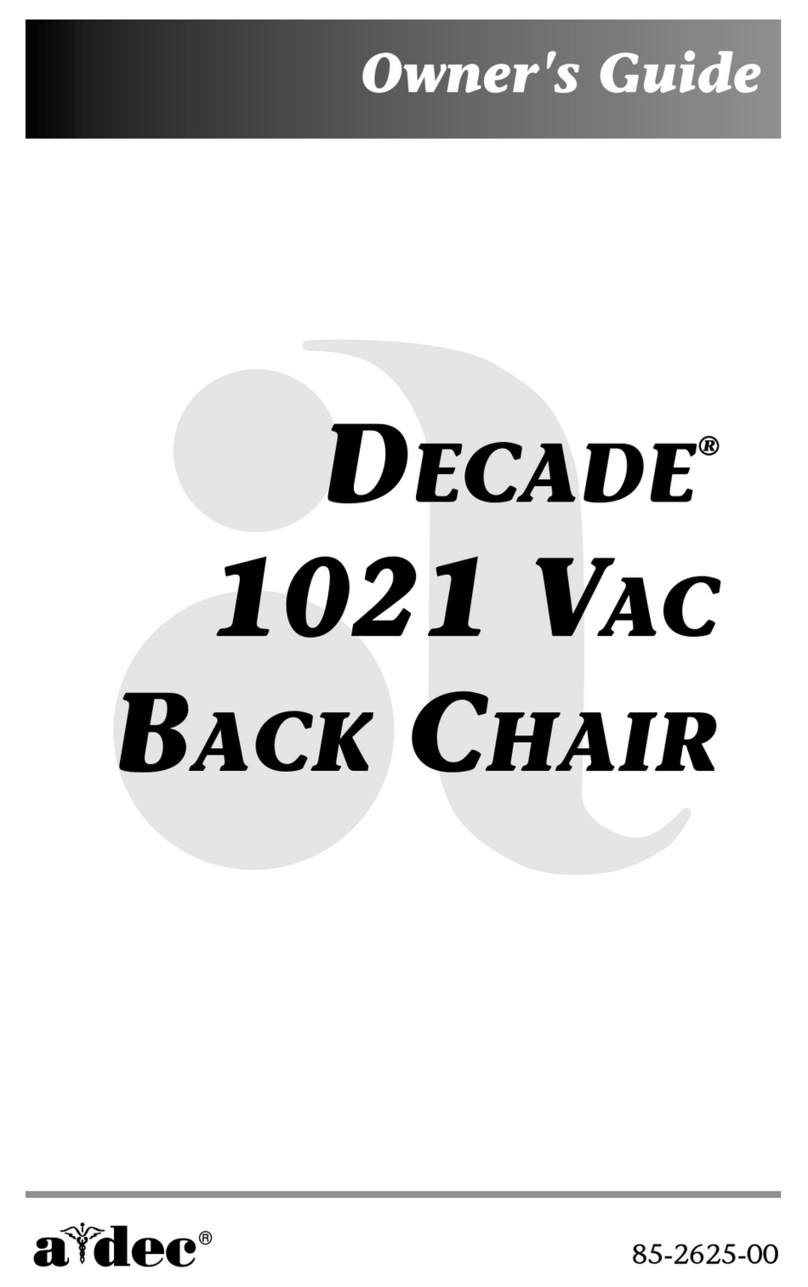septodont Biodentine XP User manual

(CE) : 2023
REV.: 2023-01 05 126 268 00 00
Biodentine™ XP
Active Biosilicate Technology™
Substitut dentinaire bioactif 1
Bioactive dentine substitute 4
Sustituto bioactivo de la dentina 7
Bioaktiver Dentinersatz 10
Sostituto bioattivo della dentina 13
Substituto bioativo de dentina 17
Bioactief dentinesubstituut 20
Bioaktywny substytut zębiny 23
Βιοενεργό υποκατάστατο οδοντίνης 26
Биоактивен заместител на дентин 29
Bioaktivní náhrada dentinu 33
Bioaktiv dentinerstatning 36
Bioaktiivne dentiini aseaine 39
Bioaktív dentin helyettesítő 42
Biologiškai aktyvus dentino pakaitalas 45
Bioloģiski aktīvs dentīna aizstājējs 48
Substitut de dentină bioactiv 51
Bioaktívna náhrada dentínu 54
Bioaktivni nadomestek dentina 57
Bioaktiv dentinersättning 60
Bioaktivna zamjena za dentin 63
Bioaktiv dentinerstatning 66
fr
en
es
de
it
pt
nl
pl
el
bg
cs
da
et
hu
lt
lv
ro
sk
sl
sv
hr
no


1
fr
Biodentine™ XP est un substitut dentinaire bioactif et basé sur lʼinnovation « Active Biosilicate
Technology™ ».
PRÉSENTATION
Biodentine™ XP 500 (piston rouge) : boîte de 10 sachets aluminium. Chaque sachet contient
1 cartouche de 700 mg (poudre) et 1 monodose de 190 μL (liquide).
Biodentine™ XP 200 (piston noir) : boîte de 10 sachets aluminium. Chaque sachet contient
1 cartouche de 468 mg (poudre) et 1 monodose de 133 μL (liquide).
COMPOSITION
La cartouche contient à la fois le constituant en poudre et le constituant liquide :
• Poudre composée de silicate tricalcique, d’oxyde de zirconium, d’oxyde de calcium, de
carbonate de calcium et d’oxydes de fer.
• La solution aqueuse est composée de chlorure de calcium, de polycarboxylate et d’eau
purifiée.
UTILISATION PRÉVUE
Substitut dentinaire bioactif.
GROUPE(S) CIBLE(S)
Population cible
Biodentine™ XP est destiné à être appliqué sur les dents temporaires (à partir de 2 ans), sur
les dents permanentes (matures ou immatures) ou sur les dents permanentes immatures
à pulpe non vitale, selon l’indication. Veuillez vous référer à la section dédiée (§Indications
d’utilisation).
Population particulière :
Des données cliniques limitées sont disponibles pour les patients âgés de 2 à 6 ans.
Aucune donnée clinique n’est disponible pour les femmes enceintes ou allaitantes.
Utilisateurs prévus
Produit réservé aux professionnels des soins dentaires uniquement.
BÉNÉFICE CLINIQUE
• Préservation de la vitalité de la dent (sauf pour l’apexification, les perforations et les
furcations)
• Préservation de la fonctionnalité des dents
• Revitalisation des dents nécrosées
RÉSUMÉ DE LA SÉCURITÉ ET DES PERFORMANCES CLINIQUES
Un résumé de la Sécurité et des Performances Cliniques est disponible, à l’aide du code
UDI-DI 37601407000004G9, dans la base de données européenne sur les dispositifs
médicaux (Eudamed) – à l’adresse https://ec.europa.eu/tools/eudamed ou sur demande
([email protected]) jusqu’à ce que le système EUDAMED soit pleinement fonctionnel.
CARACTÉRISTIQUES DE PERFORMANCE
Performances techniques / spécifications
• Résistance à la compression :
Après 24 heures, résistance à la compression ≥ 150 MPa.
Après 28 jours, résistance à la compression entre 260 et 300 MPa, ce qui est similaire à
la dentine saine.
• Capacité de scellement : création d’un joint étanche dans les tubules dentinaires.
• Temps de prise : le temps de prise moyen du produit est de 12 minutes, à partir de la fin
du mélange. Le temps de prise peut varier (de 9 à 25 minutes) en fonction de certaines
conditions, notamment la durée et les conditions de stockage.
• Temps de travail : ≥ 1 minute
Performance biologique
La bioactivité de Biodentine™ XP repose sur la formation d’hydroxyapatite favorisant un
environnement favorable à l’angiogenèse et à l’ostéogenèse, isolant le canal radiculaire des
tissus environnants et stimulant le processus de guérison des tissus apicaux endommagés.
Performance clinique
• Préservation de la pulpe
• Préservation de la structure amélo-dentinaire
• Préservation de la structure canalaire
• Édification de la racine
• Capacité de scellement nécessaire pour créer un environnement favorable requis pour
une procédure de revitalisation
INDICATIONS D’UTILISATION
Biodentine™ XP 500 et Biodentine™ XP 200 sont utilisés pour les mêmes indications, la
seule différence étant la quantité.

2
Au niveau coronaire :
Pour les dents primaires (enfants d’au moins 2 ans) et les dents permanentes (immatures
ou matures) :
• Restauration dentinaire définitive, sous composite, inlay ou onlay
• Restauration amélo-dentinaire non définitive
• Restauration des lésions carieuses coronaires profondes et/ou volumineuses
(technique sandwich)
• Restauration des lésions cervicales radiculaires
Au niveau pulpaire :
Pour les dents primaires (enfants d’au moins 2 ans) et les dents permanentes (immatures
ou matures) :
• Coiffage pulpaire (direct et indirect)
• Pulpotomie en cas de symptômes de pulpite réversible et irréversible lorsque le
saignement est maîtrisé dans les 5 minutes
Au niveau radiculaire :
Pour les dents permanentes (immatures ou matures) :
• Réparation des perforations radiculaires
• Réparation des perforations du plancher pulpaire
• Réparation des résorptions internes perforantes
• Réparations des résorptions externes
• Obturation apicale en endodontie chirurgicale (obturation a retro)
Pour les dents permanentes immatures :
• Apexification
• Procédure de revitalisation par revascularisation des dents permanentes immatures
avec pulpe nécrosée
CONTRE-INDICATIONS
• Hypersensibilité à l’un des constituants
• Restauration des pertes de substance étendues soumises à de fortes contraintes
• Espace pulpaire dont la restauration finale nécessite une couronne sur pivot ou sur
inlay-core
DURÉE DE VIE PRÉVUE
Au moins 10 ans.
MODE D’EMPLOI
Se référer aux précautions d’emploi 1 et 2
Scannez le code QR sur la carte de protocole (document « CARTE DE PROTOCOLE »)
pour regarder la vidéo.
1. Activation de la cartouche avec Biodentine™ Mixer
1.1. Soulevez le couvercle de Biodentine™ Mixer.
1.2. Placez et alignez la cartouche Biodentine™ XP dans le socle d’activation (voir la carte
de protocole, étape 3).
1.3. Verrouillez manuellement la cartouche en effectuant un quart de tour dans le sens
horaire.
1.4. Tirez manuellement le levier vers le bas jusqu’au bout (jusqu’à ce qu’il s’arrête), vous
pouvez entendre un léger clic (voir la carte de protocole, étape 4).
1.5. Remettez le levier dans sa position initiale.
1.6. Déverrouillez la cartouche du socle d’activation en effectuant un quart de tour dans
le sens anti-horaire (voir la carte de protocole, étape 7).
1.7. Vérifiez que la cartouche est correctement activée : son piston doit être poussé à
l’intérieur. Se référer aux précautions d’emploi 4.
1.8. Une fois la cartouche activée, passez immédiatement au mélange. Se reporter à
l’avertissement 9.
2. Mélange
2.1. Transférez la cartouche du socle d’activation vers le bras mélangeur de Biodentine™
Mixer (voir la carte de protocole, étapes 7 et 8).
2.2. Verrouillez manuellement la cartouche en effectuant un quart de tour dans le sens
horaire.
2.3. Fermez le couvercle de Biodentine™ Mixer.
2.4.
Appuyez sur le bouton START de Biodentine™ Mixer (voir la carte de protocole, étape 9).
2.5.
Le bouton START devient progressivement vert, indiquant le temps de mélange écoulé
(temps de mélange : 30 secondes).
2.6. Lorsque le mélange est terminé, le bouton START clignote en vert et émet deux bips.
2.7. Ouvrez le couvercle de Biodentine™ Mixer.
2.8. Déverrouillez la cartouche du bras mélangeur en effectuant un quart de tour dans le
sens anti-horaire, puis retirez-la.
2.9.
Fermez le couvercle de Biodentine™ Mixer. Éteignez le mélangeur lorsque la poursuite
de l’opération n’est plus nécessaire.

3
3. Insertion d’une cartouche Biodentine™ dans le Biodentine™ Gun
3.1. Juste après le mélange, relevez le levier de Biodentine™ Gun jusqu’à ce qu’il s’arrête
en position horizontale.
3.2. Alignez la cartouche Biodentine™ XP dans le Biodentine™ Gun (voir la carte de
protocole, étape 10).
3.3. Insérez la cartouche dans le pistolet et verrouillez-la en faisant un quart de tour dans
le sens horaire (voir la carte de protocole, étape 11).
4. Amorçage
4.1. Tenez le Biodentine™ Gun, le levier dans une main et la poignée dans l’autre (voir la
carte de protocole, étape 12) et poussez progressivement le levier vers le bas. Se
reporter à l’avertissement 11.
4.2. Arrêtez l’amorçage lorsque le substitut dentinaire apparaît dans l’embout (voir la carte
de protocole, étape 13).
5. Extrusion
5.1. Tenez le Biodentine™ Gun d’une main (voir la carte de protocole, étape 14).
5.2.
Avec un certain effort, l’embout de la cartouche peut être plié manuellement (en raison
de l’épaisseur de l’embout) pour faciliter la mise en place du substitut dentinaire (voir
la carte de protocole, étape 15). Se reporter à l’avertissement 10.
5.3. Poussez progressivement le levier vers le bas pour permettre au substitut dentinaire
de s’écouler de la cartouche. On obtient un substitut dentinaire homogène et crémeux.
Se reporter à l’avertissement 4.
6. Application
Appliquez le substitut dentinaire directement dans la cavité dentaire affectée à l’aide de
Biodentine™ Gun (voir la carte de protocole, étape 16). Autrement, vous pouvez appliquer
Biodentine™ XP à l’aide d’un porte-amalgame, d’une spatule ou d’un pistolet pour canal
radiculaire.
7. Retrait de la cartouche
Relâchez le levier et déverrouillez la cartouche de Biodentine™ Gun en effectuant un quart de
tour dans le sens anti-horaire, puis retirez la cartouche (voir la carte de protocole, étape 17).
8. Mise au rebut
Jetez la cartouche dans une poubelle appropriée. Reportez-vous à la section relative à
l’élimination des déchets.
AVERTISSEMENTS ET PRÉCAUTIONS D’EMPLOI
Précautions d’emploi
1.
Portez l’équipement de protection individuelle approprié pendant l’utilisation du dispositif,
car il peut provoquer une irritation des yeux.
2. Toutes les instructions d’utilisation sont destinées à être appliquées dans la zone de
travail, loin du patient.
3. La contamination par l’eau ralentit la prise du matériau. Évitez toute exposition à l’eau
et aux fluides pendant la phase initiale de prise.
4. Si la cartouche n’est pas correctement activée, elle peut tomber du bras mélangeur.
5. N’amorcez pas une cartouche qui n’a pas été correctement verrouillée par un quart de
tour dans le sens horaire dans le Biodentine™ Gun.
6. Reportez-vous aux instructions d’utilisation respectives de Biodentine™ Mixer et de
Biodentine™ Gun pour la préparation de Biodentine™ Mixer et de Biodentine™ Gun.
Avertissements
1. Utilisez une digue en caoutchouc pour vous assurer que le substitut dentinaire n’entre
pas en contact avec la muqueuse et n’est pas avalé.
2. Produit à usage unique : pour éviter toute contamination croisée, ne pas utiliser le
substitut dentinaire mélangé sur plusieurs patients.
3. Biodentine™ XP est uniquement destiné à être mélangé avec Biodentine™ Mixer et
extrudé avec Biodentine™ Gun. Dans le cas contraire, ses spécifications techniques
ne sont pas garanties.
4. Si la consistance du substitut dentinaire obtenu est autre qu’homogène et crémeuse,
ne pas l’utiliser.
5. Attendre la fin du temps de prise avant de réaliser une restauration permanente de
l’émail ou de retirer la matrice (lorsqu’elle est utilisée).
6. Pour la procédure de revitalisation, attendre la formation d’un caillot sanguin avant
d’appliquer Biodentine™ XP. Les anesthésiques contenant des vasoconstricteurs peuvent
empêcher la formation de caillots sanguins.
7.
Pour les procédures endodontiques, rincez avec une solution saline stérile pour éliminer
tout résidu d’irrigant et séchez sans déshydrater totalement le canal radiculaire.
8.
Si la cartouche tombe par terre, nettoyez-la avec de l’éthanol pour éviter toute contamination.
9.
Si 3 minutes s’écoulent entre l’activation de la cartouche et le mélange, n’utilisez pas la
cartouche, sinon les performances techniques du substitut dentinaire ne sont pas garanties.
10. Ne pliez pas l’embout à 90° plus de 4 fois pour éviter de le casser.
11. Pendant l’étape d’amorçage, ne poussez pas le levier trop brusquement vers le bas ;
poussez-le progressivement pour éviter l’extrusion involontaire du substitut dentinaire.

4
EFFETS SECONDAIRES
Possibilité d’hypersensibilité à Biodentine™ XP ou à ses constituants (fréquence estimée :
moins de 1/100 000).
Veuillez signaler tout incident grave lié au dispositif à Septodont ([email protected])
et à l’autorité locale compétente en matière de dispositifs médicaux.
Veuillez informer le patient des potentiels effets secondaires liés à Biodentine™ XP.
CONSERVATION
À conserver à une température entre 5°C et 25°C et à l’abri de l’humidité.
Tout matériau restant doit être jeté.
MISE AU REBUT
S’il est contaminé, jetez le produit Biodentine™ XP dans une poubelle appropriée, sinon
vous pouvez jeter le produit dans une poubelle ordinaire.
SYMBOLES
Mandataire CH
en
Biodentine™ XP is a bioactive dentine substitute based on the “Active Biosilicate Technology™”
innovation.
PRESENTATION
Biodentine™ XP 500 (red piston): box of 10 foils, each foil contains 1 cartridge of 700 mg
of powder and 190 μL of Liquid.
Biodentine™ XP 200 (black piston): box of 10 foils, each foil contains 1 cartridge of 468 mg
of powder and 133 μL of Liquid.
COMPOSITION
The cartridge contains both the powder and liquid components:
• The powder component is composed of tricalcium silicate, zirconium oxide, calcium
oxide, calcium carbonate and iron oxides.
• The liquid component is composed of calcium chloride, polycarboxylate and purified
water.
INTENDED USE
Bioactive dentine substitute.
TARGET GROUP(S)
Target population
Biodentine™ XP is intended to be applied on temporary teeth (from 2 years old), on permanent
teeth (mature or immature) or on non-vital immature permanent teeth depending on indication.
Please refer to the dedicated section (§Indications for use).
Particular population:
Limited clinical data is available for patient population aged from 2 to 6 years old.
No clinical data is available for pregnant or breastfeeding women.
Intended users
Dental healthcare professionals only.
CLINICAL BENEFIT
• Preservation of tooth vitality (except for apexification, perforations and furcations)
• Preservation of tooth functionality
• Revitalization of necrotic teeth
SUMMARY OF SAFETY AND CLINICAL PERFORMANCE
A Summary of Safety and Clinical Performance is available, using Basic UDI-DI Code
37601407000004G9, in the European database on medical devices (Eudamed) at
https://ec.europa.eu/tools/eudamed or upon request ([email protected]) until EUDAMED
is fully functional.
PERFORMANCE CHARACTERISTICS
Technical performances / specifications
• Compressive strength:
At 24h, compressive strength ≥ 150MPa
After 28days, compressive strength: between 260MPa and 300MPa which is similar to the
sound dentine.
• Sealing ability: creation of a tight seal within dentinal tubules.
• Setting time: the average setting time of the product is 12 minutes, starting from the
end of mixing. The setting time may vary (from 9 to 25 minutes) depending on some
conditions, including the storage time and conditions.
• Working time: ≥ 1 min

5
Biological performance
The bioactivity of Biodentine™ XP relies on hydroxyapatite formation promoting a favourable
environment for angiogenesis and osteogenesis, isolating the root canal from the surrounding
tissues and stimulating the healing process of damaged apical tissues.
Clinical performance
• Preservation of the pulp
• Preservation of the amelodentinal structure
• Preservation of the root canal structure
• Root edification
• Sealing ability necessary to create a favourable environment required for the
Revitalization procedure
INDICATIONS FOR USE
Biodentine™ XP 500 and Biodentine™ XP 200 are used for the same indications, the only
difference is quantity.
In the crown:
For temporary teeth (children from 2 years of age) and permanent teeth (immature or mature):
• Permanent dentine restoration under composites or Inlay/Onlay
• Temporary dentine-enamel restoration
• Restoration of deep and/or large coronal carious lesions (sandwich technique)
• Restoration of cervical or radicular lesions
On the pulp:
For temporary teeth (children from 2 years of age) and permanent teeth (immature or mature):
• Pulp capping (direct and indirect)
• Pulpotomy for diagnosed symptoms of reversible pulpitis and irreversible pulpitis where
bleeding is controlled within 5 minutes.
In the root:
For permanent teeth (immature or mature):
• Repair of root perforations
• Repair of furcation perforations
• Repair of perforating internal resorptions
• Repair of external resorption
• Root-end filling in endodontic surgery (retrograde filling)
For immature permanent teeth:
• Apexification
• Revitalization procedure by means of revascularization of permanent immature teeth
with necrotic pulp
CONTRA-INDICATIONS
• Hypersensitivity to one of the ingredients.
• Restoration of large loss of tooth substance subjected to high stresses.
• Pulp space that requires post or core for the final restoration.
EXPECTED LIFETIME
At least 10 years.
INSTRUCTIONS FOR USE
Refer to Precautions for use 1 and 2
Scan the QR code on the Protocol Card (Document “PROTOCOL CARD”) to watch the
video.
1. Activation of the cartridge with the Biodentine™ Mixer
1.1. Open the lid of the Biodentine™ Mixer.
1.2. Put and align the Biodentine™ XP cartridge in the activation socket (see Protocol
Card step 3).
1.3. Lock the cartridge manually by making a clockwise quarter turn.
1.4. Manually pull the lever down all the way (until it stops), you may hear a slight click
(see Protocol Card step 4).
1.5. Put the lever back in its initial position.
1.6. Unlock the cartridge from the activation socket by making an anticlockwise quarter
turn (See Protocol Card step 7).
1.7.
Check if the cartridge is properly activated: the cartridge piston should be pushed inside.
Refer to Precautions for use 4.
1.8. Once the cartridge is activated, proceed immediately to Mixing. Refer to Warning 9.
2. Mixing
2.1. Transfer the cartridge from the activation socket to the Mixing arm of the Biodentine™
Mixer (see Protocol Card steps 7 and 8).
2.2. Lock the cartridge manually by making a clockwise quarter turn.
2.3. Close the lid of the Biodentine™ Mixer.
2.4. Press the START button on the Biodentine™ Mixer, (see Protocol Card step 9).
2.5. The START button will progressively become green indicating the elapsed mixing time
(mixing time: 30 seconds).

6
2.6. When mixing is complete, the START button will blink green and beep twice.
2.7. Open the lid of the Biodentine™ Mixer.
2.8. Unlock the cartridge from the mixing arm by making an anticlockwise quarter turn,
then remove it.
2.9. Close the lid of the Biodentine™ Mixer. Turn off the mixer when further operation is
no longer needed.
3. Insertion of a Biodentine™ cartridge into the Biodentine™ Gun
3.1. Immediately after mixing, raise the Biodentine™ Gun lever until it stops in a horizontal
position.
3.2.
Align the Biodentine™ XP Cartridge in the Biodentine™ Gun (see Protocol Card step 10).
3.3. Insert the cartridge into the Gun and lock the cartridge making a clockwise quarter
turn (see Protocol Card step 11).
4. Priming
4.1. Hold the Biodentine™ Gun, the lever in one hand and the handle in the other, (see
Protocol Card step 12) and progressively push the lever down. Refer to Warning 11.
4.2.
Stop priming when the dentine substitute appears in the nozzle (see Protocol Card step 13).
5. Extrusion
5.1. Hold the Biodentine™ Gun with one hand (see Protocol Card step 14).
5.2. With some effort, the cartridge nozzle can be bent manually (due to the thickness of
the nozzle) to facilitate the placement of the dentine substitute (see Protocol Card step
15) Refer to Warning 10.
5.3. Progressively push down the lever to allow the dentine substitute to flow out of the
cartridge. A homogeneous and creamy dentine substitute is obtained. Refer to Warning 4.
6. Application
Apply the dentine substitute directly into the affected tooth cavity with the Biodentine™ Gun.
(see Protocol Card step 16). Alternatively, you may apply Biodentine™ XP with an amalgam
carrier, a spatula, or a Root Canal Messing Gun.
7. Cartridge removal
Release the lever and unlock the cartridge from the Biodentine™ Gun by making an
anticlockwise quarter turn and then removing the cartridge (see Protocol Card step 17).
8. Disposal
Dispose the cartridge in an appropriate bin. Refer to the Disposal section.
WARNINGS AND PRECAUTIONS FOR USE
Precautions for use
1. Wear the appropriate personal protective equipment while using the device because it
may cause eye irritation.
2. All the instructions for use are intended for application within the working area, away
from the patient.
3. Water contamination slows down the setting of the material. Prevent exposure to water
and fluids during the initial setting stage.
4. If the cartridge is not correctly activated, it may fall from the mixing arm.
5. Do not prime a cartridge that has not been locked properly with a clockwise quarter
turn in the Biodentine™ Gun.
6. Refer to the Biodentine™ Mixer and Biodentine™ Gun instructions respectively for use
for the Biodentine™ Mixer and Biodentine™ Gun preparation.
Warnings
1. Use a rubber dam to ensure that the dentine substitute does not come into contact with
the mucosa and is not swallowed.
2.
Single-use product: to avoid cross contamination, do not use the mixed dentine substitute
on several patients.
3. Biodentine™ XP is only intended to be mixed with the BiodentineTM Mixer and extruded
with the BiodentineTM Gun. Otherwise, its technical specifications are not guaranteed.
4. If the consistency of the obtained dentine substitute is other than homogeneous and
creamy, do not use it.
5. Wait until the end of the setting time before performing permanent enamel restoration
or removing the matrix (when used).
6. For revitalization procedure, wait until the formation of a blood clot before applying
Biodentine™ XP. Anaesthetics with vasoconstrictors may prevent blood clot formation.
7. For endodontic procedures, flush with a sterile saline solution to remove any irrigant
residue and dry without totally dehydrating the root canal.
8. If the cartridge falls on the floor, clean it with ethanol to avoid contamination.
9. If 3 minutes pass between cartridge activation and mixing, do not use the cartridge,
otherwise the technical performance of the dentine substitute is not guaranteed.
10. Do not bend the nozzle to 90° more than 4 times to avoid breaking the nozzle.
11. During the priming step, do not push the lever down too suddenly; push it progressively
to avoid unintended extrusion of the dentine substitute.

7
SIDE-EFFECTS
Possible hypersensitivity to Biodentine™ XP or ingredients (estimated frequency: less than
1/100 000).
Please report any serious incident that occurs involving the device to Septodont
Please inform the patient of potential side-effects related to Biodentine™ XP.
STORAGE
Store between 5°C and 25°C and protect from moisture.
Any remaining material shall be discarded.
DISPOSAL
Dispose of Biodentine™ XP in an appropriate bin if it is contaminated, otherwise it can be
disposed of in a regular bin.
es
Biodentine™ XP es un sustituto bioactivo de la dentina basado en la innovación "Active
Biosilicate Technology™".
PRESENTACIÓN
Biodentine™ XP 500 (pistón rojo): caja de 10 láminas, cada lámina contiene 1 cartucho de
700 mg de polvo y 190 μL de líquido.
Biodentine™ XP 200 (pistón negro): caja de 10 láminas, cada lámina contiene 1 cartucho
de 468 mg de polvo y 133 μL de líquido.
COMPOSICIÓN
El cartucho contiene los componentes líquidos y en polvo:
• El componente en polvo se compone de silicato tricálcico, óxido de circonio, óxido de
calcio, carbonato de calcio y óxidos de hierro.
• El componente líquido está compuesto por cloruro cálcico, policarboxilato y agua
purificada.
USO PREVISTO
Sustituto bioactivo de la dentina
GRUPO(S) OBJETIVO(S)
Población objetivo
Biodentine™ XP está indicado para su aplicación en dientes temporales (a partir de los 2
años), dientes permanentes (maduros o inmaduros) o dientes permanentes inmaduros no
vitales, dependiendo de la indicación. Consulte la sección dedicada (§Indicaciones de uso).
Población particular:
Se dispone de datos clínicos limitados para la población de pacientes de 2 a 6 años de edad.
No hay datos clínicos disponibles para mujeres embarazadas o en periodo de lactancia.
Usuarios previstos
Profesionales de odontología únicamente.
BENEFICIO CLÍNICO
• Preservación de la vitalidad de los dientes (excepto en caso de apexificación,
perforaciones y furcaciones).
• Preservación de la funcionalidad de los dientes
• Revitalización de los dientes necróticos
RESUMEN DE SEGURIDAD Y RENDIMIENTO CLÍNICO
Hay un resumen de seguridad y rendimiento clínico disponible para consulta, utilizando el
Código Básico UDI-DI 37601407000004G9, en la base de datos europea sobre productos
sanitarios (Eudamed) en https://ec.europa.eu/tools/eudamed o por previa solicitud
([email protected]) hasta que EUDAMED sea plenamente funcional.
CARACTERÍSTICAS DE RENDIMIENTO
Rendimiento técnico / Especificaciones
• Resistencia a la compresión:
A las 24 horas, resistencia a la compresión ≥ 150MPa
Después de 28 días, resistencia a la compresión: entre 260MPa y 300MPa, lo cual es
similar a la dentina sana.
• Capacidad de sellado: creación de un sello hermético dentro de los túbulos dentinarios.
• Tiempo de fraguado: el tiempo medio de fraguado del producto es de 12 minutos,
a partir del final de la mezcla. El tiempo de fraguado puede variar (de 9 a 25
minutos) en función de algunas condiciones, incluyendo el tiempo y condiciones de
almacenamiento.
• Tiempo de funcionamiento: ≥ 1 min.

8
Rendimiento biológico
La bioactividad de Biodentine™ XP se basa en la formación de hidroxiapatita, promoviendo
un entorno favorable para la angiogénesis y la osteogénesis, aislando el conducto radicular
de los tejidos circundantes y estimulando el proceso de cicatrización de los tejidos apicales
dañados.
Rendimiento clínico
• Conservación de la pulpa
• Conservación de la estructura amelodentinal
• Conservación de la estructura del conducto radicular
• Edificación radicular
• Capacidad de sellado necesaria para crear el entorno favorable requerido para el
procedimiento de revitalización
INDICACIONES DE USO
Biodentine™ XP 500 y Biodentine™ XP 200 se utilizan para las mismas indicaciones; la
única diferencia es la cantidad.
En la corona
Para dientes temporales (niños a partir de 2 años) y permanentes (inmaduros o maduros):
• Restauración permanente de la dentina bajo composites o Inlay/Onlay
• Restauración temporal dentina-esmalte
• Restauración de lesiones cariosas coronales profundas y/o extensas (técnica
"sándwich")
• Restauración de lesiones cervicales o radiculares
En la pulpa:
Para dientes temporales (niños a partir de 2 años) y permanentes (inmaduros o maduros):
• Recubrimiento pulpar (directo e indirecto)
• Pulpotomía para síntomas diagnosticados de pulpitis reversible y pulpitis irreversible
cuando la hemorragia se controla en un plazo de 5 minutos.
En la raíz:
Para dientes permanentes (inmaduros o maduros):
• Reparación de perforaciones de raíz
• Reparación de perforaciones de furcación
• Reparación de reabsorciones internas perforantes
• Reparación de reabsorción externa
• Obturación radicular en cirugía endodóntica (obturación retrógrada)
Para dientes permanentes inmaduros:
• Apexificación
• Procedimiento de revitalización mediante revascularización de dientes permanentes
inmaduros con pulpa necrótica
CONTRAINDICACIONES
• Hipersensibilidad para uno de los ingredientes.
• Restauración de grandes pérdidas de sustancia dental sometidas a altas tensiones.
• Espacio pulpar que requiere perno o muñón para la restauración definitiva.
VIDA ÚTIL PREVISTA
Mínimo de 10 años.
INSTRUCCIONES DE USO
Consultar las Precauciones para los usos 1 y 2
Escanear el código QR de la Tarjeta de Protocolo (documento “PROTOCOL CARD”)
para ver el vídeo.
1. Activación del cartucho con el Biodentine™ Mixer
1.1. Abrir la tapa del Biodentine™ Mixer
1.2. Colocar y alinear el cartucho Biodentine™ XP en la toma de activación (ver paso 3
de la Tarjeta de Protocolo).
1.3. Bloquear el cartucho manualmente dando un cuarto de vuelta en el sentido de las
agujas del reloj.
1.4. Tirar manualmente de la palanca hacia abajo hasta el fondo (hasta que se detenga);
es posible que se oiga un ligero clic (ver paso 4 de la Tarjeta de Protocolo).
1.5. Volver a colocar la palanca en su posición inicial.
1.6. Desbloquear el cartucho del zócalo de activación dando un cuarto de vuelta en
el sentido contrario a las agujas del reloj (ver paso 7 de la Tarjeta de Protocolo).
1.7. Comprobar si el cartucho está correctamente activado: el pistón del cartucho debe
empujarse hacia el interior. Consultar las Precauciones para el uso 4.
1.8. Una vez activado el cartucho, proceder inmediatamente a la mezcla. Consultar la
Advertencia 9.

9
2. Mezcla
2.1. Transferir el cartucho de la toma de activación al brazo mezclador del Biodentine™
Mixer (ver pasos 7 y 8 de la Tarjeta de Protocolo).
2.2. Bloquear el cartucho manualmente dando un cuarto de vuelta en el sentido de las
agujas del reloj.
2.3. Cerrar la tapa del Biodentine™ Mixer
2.4. Pulsar el botón START (Inicio) del Biodentine™ Mixer, (ver paso 9 de la Tarjeta de
Protocolo).
2.5. El botón START se volverá progresivamente verde indicando el tiempo de mezcla
transcurrido (tiempo de mezcla: 30 segundos).
2.6.
Una vez finalizada la mezcla, el botón START parpadeará en verde y emitirá dos pitidos.
2.7. Abrir la tapa del Biodentine™ Mixer.
2.8.
Desbloquear el cartucho del brazo de mezcla dando un cuarto de vuelta en el sentido
contrario a las agujas del reloj y a continuación retirarlo.
2.9.
Cerrar la tapa del Biodentine™ Mixer. Apagar el mezclador cuando ya no sea necesario
utilizarlo.
3. Inserción de un cartucho Biodentine™ en la Biodentine™ Gun
3.1.
Inmediatamente después de mezclar, levantar la palanca de la Biodentine™ Gun hasta
que se detenga en posición horizontal.
3.2. Colocar y alinear el cartucho Biodentine™ XP en la Biodentine™ Gun (ver paso 10
de la Tarjeta de Protocolo).
3.3.
Insertar el cartucho en la Pistola y bloquear el cartucho dando un cuarto de vuelta en
el sentido de las agujas del reloj (ver paso 11 de la Tarjeta de Protocolo).
4. Cebado
4.1. Sujetar la Biodentine™ Gun con la palanca en una mano y la empuñadura en la otra
(ver paso 12 de la Tarjeta de Protocolo) y empujar progresivamente la palanca hacia
abajo. Consultar la Advertencia 11.
4.2. Detener el cebado cuando el sustituto de dentina aparezca en la boquilla (ver paso
13 de la Tarjeta de Protocolo).
5. Extrusión
5.1. Sujetar la Biodentine™ Gun con una mano (ver paso 14 de la Tarjeta de Protocolo)
5.2.
Con un poco de esfuerzo, la boquilla del cartucho puede doblarse manualmente (gracias
al grosor de la boquilla) para facilitar la colocación del sustituto de la dentina (ver paso
15 de la Tarjeta de Protocolo). Consultar la Advertencia 10.
5.3. Empujar progresivamente la palanca hacia abajo para que el sustituto de dentina
pueda salir del cartucho. Se obtendrá un sustituto de dentina homogéneo y cremoso.
Consultar la Advertencia 4.
6. Aplicación
Aplicar el sustituto de dentina directamente en la cavidad dental afectada con la Biodentine™
Gun (ver paso 16 de la Tarjeta de Protocolo). Alternativamente, se puede aplicar Biodentine™
XP con un portador de amalgama, una espátula o una pistola de limpieza de conductos
radiculares.
7. Extracción del cartucho
Soltar la palanca y desbloquear el cartucho de la Biodentine™ Gun dando un cuarto de
vuelta en el sentido contrario a las agujas del reloj y a continuación retirar el cartucho
(ver paso 17 de la Tarjeta de Protocolo).
8. Eliminación
Desechar el cartucho en un contenedor adecuado. Consultar la sección Eliminación.
ADVERTENCIAS Y PRECAUCIONES DE USO
Precauciones de uso
1. Llevar el equipo de protección individual adecuado durante el uso del aparato, ya que
puede causar irritación ocular.
2. Todas las instrucciones de uso están previstas para su aplicación dentro del área de
trabajo, lejos del paciente.
3. La contaminación por agua ralentiza el fraguado del material. Evitar la exposición al
agua y a líquidos durante la fase inicial de fraguado.
4. Si el cartucho no se activa correctamente, puede caerse del brazo mezclador.
5.
No cebar un cartucho que no se haya bloqueado correctamente con un cuarto de vuelta
en el sentido de las agujas del reloj en la Biodentine™ Gun.
6. Consultar las instrucciones de uso del Biodentine™ Mixer y la Biodentine™ Gun
respectivamente para la preparación del Biodentine™ Mixer y la Biodentine™ Gun.
Advertencias
1. Utilizar un dique de goma para asegurarse de que el sustituto de la dentina no entre en
contacto con la mucosa y no se ingiera.
2. Producto de un solo uso: para evitar la contaminación cruzada, no utilizar el sustituto
de dentina mezclado en varios pacientes.
3. Biodentine™ XP debe mezclarse únicamente con el Biodentine™ Mixer y ser extruido
con la Biodentine™ Gun. De lo contrario, no se garantizan sus especificaciones técnicas.

10
4. Si la consistencia del sustituto de dentina obtenido no es homogénea y cremosa, no
debe utilizarse.
5. Debe esperarse a que finalice el tiempo de fraguado antes de realizar la restauración
permanente del esmalte o de retirar la matriz (cuando se utilice).
6. Para el procedimiento de revitalización, esperar hasta la formación de un coágulo de
sangre antes de aplicar Biodentine™ XP. Los anestésicos con vasoconstrictores pueden
impedir la formación de coágulos sanguíneos.
7. Para procedimientos endodónticos, lavar con una solución salina estéril para eliminar
cualquier residuo de irrigación y secar sin deshidratar totalmente el conducto radicular.
8. Si el cartucho cae al suelo, limpiarlo con etanol para evitar la contaminación.
9. Si transcurren 3 minutos entre la activación del cartucho y la mezcla, no utilizar el
cartucho; de lo contrario, no se garantiza el rendimiento técnico del sustituto de la dentina.
10. No doblar la boquilla a 90° más de 4 veces para evitar su rotura.
11.
Durante la fase de cebado, no empujar la palanca hacia abajo demasiado bruscamente;
debe empujarse progresivamente para evitar la extrusión involuntaria del sustituto de
dentina.
EFECTOS COLATERALES
Posible hipersensibilidad a Biodentine™ XP o a sus ingredientes (frecuencia estimada:
menos de 1/100 000).
Se ruega comunicar cualquier incidente grave que pueda ocurrir en relación con el dispositivo
productos sanitarios.
Informar al paciente de los posibles efectos colaterales relacionados con Biodentine™ XP.
ALMACENAMIENTO
Almacenar entre 5°C y 25°C y proteger de la humedad.
Debe desecharse cualquier resto de material.
ELIMINACIÓN
Desechar Biodentine™ XP en un contenedor adecuado si está contaminado; en caso
contrario, puede desecharse en un contenedor normal.
de
Biodentine™ XP ist ein bioaktiver Dentinersatz, der auf der innovativen „Active Biosilicate
Technology™“ basiert.
PRÄSENTATION
Biodentine™ XP 500 (roter Kolben): Schachtel mit 10 Folien, jede Folie enthält 1 Kartusche
mit 700 mg Pulver und 190 μl Flüssigkeit.
Biodentine™ XP 200 (schwarzer Kolben): Schachtel mit 10 Folien, jede Folie enthält
1 Kartusche mit 468 mg Pulver und 133 μL Flüssigkeit.
ZUSAMMENSETZUNG
Die Kartusche enthält sowohl die pulverförmige als auch die flüssige Komponente:
• Die Pulverkomponente besteht aus Tricalciumsilikat, Zirkoniumoxid, Calciumoxid,
Calciumcarbonat und Eisenoxiden.
• Die flüssige Komponente besteht aus Calciumchlorid, Polycarboxylat und reinem
Wasser.
VERWENDUNGSZWECK
Bioaktiver Dentinersatz.
ZIELGRUPPE(N)
Zielpopulation
BiodentineTM XP ist je nach Indikation für die Anwendung auf provisorischen Zähnen (ab
2 Jahren), auf bleibenden Zähnen (reif oder unreif) oder auf nicht vitalen, unreifen bleibenden
Zähnen vorgesehen. Bitte beachten Sie den entsprechenden Abschnitt (§ Anwendungshinweise).
Besondere Population:
Für die Patient*innenpopulation im Alter von 2 bis 6 Jahren liegen nur begrenzte klinische
Daten vor.
Es liegen keine klinischen Daten für schwangere oder stillende Frauen vor.
Vorgesehene Nutzer*innen
Nur für zahnmedizinisches Fachpersonal.
KLINISCHER NUTZEN
• Erhaltung der Zahnvitalität (außer bei Apexifikation, Perforationen und Furkationen)
• Erhaltung der Zahnfunktionalität
• Revitalisierung von nekrotischen Zähnen

11
ZUSAMMENFASSUNG DER SICHERHEIT UND KLINISCHEN LEISTUNG
Eine Übersicht über die Sicherheit und klinische Leistung steht unter Verwendung des
UDI-Basiscodes 37601407000004G9 in der europäischen Datenbank für Medizinprodukte
(Eudamed) unter https://ec.europa.eu/tools/eudamed oder auf Anfrage
([email protected]) zur Verfügung, bis EUDAMED voll funktionsfähig ist.
LEISTUNGSEIGENSCHAFTEN
Technische Leistungen/Spezifikationen
• Druckbeständigkeit:
Druckbeständigkeit ≥ 150 MPa nach 24 Stunden
Nach 28 Tagen liegt die Druckfestigkeit zwischen 260 MPa und 300 MPa, was dem gesunden
Dentin gleichkommt.
• Versiegelungsfähigkeit: Schaffung einer dichten Versiegelung innerhalb der
Dentinkanälchen.
• Aushärtezeit: Die durchschnittliche Aushärtezeit des Produkts beträgt 12 Minuten
ab dem Ende des Mischvorgangs. Die Aushärtezeit kann abhängig von einigen
Bedingungen, darunter die Lagerzeit und -bedingungen, von 9 bis 25 Minuten variieren.
• Verarbeitungszeit: ≥ 1 Min.
Biologische Leistung
Die Bioaktivität von Biodentine™ XP beruht auf der Bildung von Hydroxylapatit, das ein
günstiges Umfeld für die Angiogenese und Osteogenese schafft, den Wurzelkanal von
den umliegenden Geweben isoliert und den Heilungsprozess des geschädigten apikalen
Gewebes stimuliert.
Klinische Leistung
• Konservierung der Pulpa
• Konservierung der amelodentinen Struktur
• Konservierung der Wurzelkanalstruktur
• Wurzelbildung
• Versiegelungsfähigkeit, die zur Schaffung eines günstigen Umfelds für das
Revitalisierungsverfahren erforderlich ist
ANWENDUNGSHINWEISE
Biodentine™ XP 500 und Biodentine™ XP 200 werden für dieselben Indikationen verwendet;
der einzige Unterschied besteht in der Menge.
In der Krone:
Für provisorische Zähne (Kinder ab 2 Jahren) und bleibende Zähne (unreif oder reif):
• Dauerhafte Dentinrestauration unter Komposit oder Inlay/Onlay
• Provisorische Dentin-Schmelz-Restauration
• Restauration von tiefen und/oder großen koronalen kariösen Läsionen (Sandwich-
Technik)
• Restauration von zervikalen oder radikulären Läsionen
Auf der Pulpa:
Für provisorische Zähne (Kinder ab 2 Jahren) und bleibende Zähne (unreif oder reif):
• Verschließen der Pulpa (direkt und indirekt)
• Pulpotomie bei diagnostizierten Symptomen einer reversiblen Pulpitis und einer
irreversiblen Pulpitis, wenn die Blutung innerhalb von 5 Minuten gestoppt wird.
In der Wurzel:
Für bleibende Zähne (unreif oder reif):
• Reparatur von Wurzelperforationen
• Reparatur von Furkationsperforationen
• Reparatur von perforierenden inneren Resorptionen
• Reparatur der externen Resorption
• Wurzelendfüllung in der endodontischen Chirurgie (retrograde Füllung)
Für unreife bleibende Zähne:
• Apexifikation
• Revitalisierungsverfahren durch Revaskularisierung von bleibenden unreifen Zähnen
mit nekrotischer Pulpa
KONTRAINDIKATIONEN
• Überempfindlichkeit gegen einen der Inhaltsstoffe.
• Restauration von großen Zahnsubstanzverlusten durch hohe Beanspruchung.
• Pulpahöhle, die einen Stift oder Kern für die endgültige Restauration erfordert.
VORAUSSICHTLICHE LEBENSDAUER
Mindestens 10 Jahre.

12
GEBRAUCHSANWEISUNG
Siehe Vorsichtsmaßnahmen für den Gebrauch 1 und 2
Scannen Sie den QR-Code auf der Protokollkarte (Dokument „PROTOKOLLKARTE“),
um das Video anzusehen.
1. Aktivierung der Kartusche mit dem Biodentine™ Mixer
1.1. Öffnen Sie den Deckel des Biodentine™ Mixer.
1.2. Setzen Sie die Biodentine™ XP-Kartusche in den Aktivierungssockel ein und passen
Sie sie an (siehe Protokollkarte Schritt 3).
1.3. Verriegeln Sie die Kartusche manuell durch eine Vierteldrehung im Uhrzeigersinn.
1.4. Ziehen Sie den Hebel von Hand ganz nach unten (bis zum Anschlag). Dabei können
Sie ein leichtes Klicken hören (siehe Protokollkarte Schritt 4).
1.5. Bringen Sie den Hebel wieder in seine Ausgangsstellung.
1.6.
Entriegeln Sie die Kartusche aus dem Aktivierungssockel, indem Sie eine Vierteldrehung
gegen den Uhrzeigersinn ausführen (siehe Protokollkarte Schritt 7).
1.7. Prüfen Sie, ob die Kartusche richtig aktiviert ist: Der Kolben der Kartusche muss nach
innen gedrückt werden. Siehe Vorsichtsmaßnahmen für den Gebrauch 4.
1.8. Sobald die Kartusche aktiviert ist, fahren Sie sofort mit dem Mischen fort. Siehe
Warnhinweis 9.
2. Mischen
2.1.
Setzen Sie die Kartusche aus dem Aktivierungssockel in den Mischarm des Biodentine™
Mixer ein (siehe Protokollkarte Schritte 7 und 8).
2.2. Verriegeln Sie die Kartusche manuell durch eine Vierteldrehung im Uhrzeigersinn.
2.3. Schließen Sie den Deckel des Biodentine™ Mixer.
2.4. Drücken Sie die START-Taste am Biodentine™ Mixer (siehe Protokollkarte Schritt 9).
2.5. Die START-Taste wird nach und nach grün und zeigt damit die abgelaufene Mischzeit
an (Mischzeit: 30 Sekunden).
2.6. Wenn das Mischen abgeschlossen ist, blinkt die START-Taste grün, und es ertönt
zweimal ein Signalton.
2.7. Öffnen Sie den Deckel des Biodentine™ Mixer.
2.8. Lösen Sie die Kartusche durch eine Vierteldrehung gegen den Uhrzeigersinn vom
Mischarm und nehmen Sie sie dann ab.
2.9. Schließen Sie den Deckel des Biodentine™ Mixer. Sobald der Mischer nicht mehr
benötigt wird, schalten Sie ihn aus.
3. Einsetzen einer Biodentine™-Kartusche in die Biodentine™ Gun
3.1. Heben Sie sofort nach dem Mischen den Hebel der Biodentine™ Gun an, bis er in
einer horizontalen Position stehen bleibt.
3.2. Passen Sie die Biodentine™ XP-Kartusche in der Biodentine™ Gun an (siehe
Protokollkarte Schritt 10).
3.3.
Setzen Sie die Kartusche in die Pistole ein und verriegeln Sie die Kartusche durch eine
Vierteldrehung im Uhrzeigersinn (siehe Protokollkarte Schritt 11).
4. Grundieren
4.1. Halten Sie die Biodentine™ Gun, den Hebel in der einen und den Griff in der anderen
Hand (siehe Protokollkarte Schritt 12) und drücken Sie den Hebel schrittweise nach
unten. Siehe Warnhinweis 11.
4.2. Beenden Sie das Grundieren, wenn der Dentinersatz in der Düse erscheint (siehe
Protokollkarte Schritt 13).
5. Extrusion
5.1. Halten Sie die Biodentine™ Gun mit einer Hand (siehe Protokollkarte Schritt 14).
5.2. Die Düse der Kartusche kann mit etwas Kraftaufwand von Hand gebogen werden
(aufgrund der Dicke der Düse), um die Einbringung des Dentinersatzes zu erleichtern
(siehe Protokollkarte Schritt 15) Siehe Warnhinweis 10.
5.3. Drücken Sie den Hebel schrittweise nach unten, damit das Dentinersatzmaterial aus
der Kartusche fließen kann. Es entsteht ein homogener und cremiger Dentinersatz.
Siehe Warnhinweis 4.
6. Auftragen
Bringen Sie den Dentinersatz mit der Biodentine™ Gun direkt in die betroffene Zahnkavität
ein. (siehe Protokollkarte Schritt 16). Alternativ können Sie Biodentine™ XP auch mit einem
Amalgamträger, einem Spatel oder einer Wurzelkanal-Dosierpistole auftragen.
7. Entfernen der Kartusche
Lassen Sie den Hebel los und entriegeln Sie die Kartusche von der Biodentine™ Gun, indem
Sie eine Vierteldrehung gegen den Uhrzeigersinn ausführen und dann die Kartusche
entfernen (siehe Protokollkarte Schritt 17).
8. Entsorgung
Entsorgen Sie die Kartusche in einem geeigneten Behälter. Siehe Abschnitt zur Entsorgung.
WARNHINWEISE UND VORSICHTSMASSNAHMEN FÜR DEN GEBRAUCH
Vorsichtsmaßnahmen für den Gebrauch
1.
Tragen Sie bei der Verwendung des Geräts eine geeignete persönliche Schutzausrüstung,
da es Augenreizungen verursachen kann.

13
2. Die Gebrauchsanweisung ist für die Anwendung innerhalb des Arbeitsbereichs und von
den Patient*innen entfernt gedacht.
3. Wasserverunreinigungen verlangsamen die Aushärtung des Materials. Vermeiden Sie
den Kontakt mit Wasser und Flüssigkeiten während der ersten Aushärtungsphase.
4. Wenn die Kartusche nicht richtig aktiviert wird, kann sie aus dem Mischarm fallen.
5.
Eine nicht ordnungsgemäß mit einer Vierteldrehung im Uhrzeigersinn in der Biodentine™
Gun verriegelte Kartusche darf nicht zum Grundieren verwendet werden.
6.
Beachten Sie die Gebrauchsanweisung für den Biodentine™ Mixer und die Biodentine™
Gun für die Verwendung des Biodentine™ Mixer und der Biodentine™ Gun.
Warnhinweise
1.
Verwenden Sie einen Kofferdam, damit das Dentinersatzmaterial nicht mit der Schleimhaut
in Kontakt kommt und verschluckt wird.
2.
Einwegprodukt: Um Kreuzkontaminationen zu vermeiden, verwenden Sie den gemischten
Dentinersatz nicht bei mehreren Patient*innen.
3. Biodentine™ XP ist nur zum Mischen mit dem Biodentine™ Mixer und zum Extrudieren
mit der Biodentine™ Gun bestimmt. Sonst sind die technischen Spezifikationen nicht
garantiert.
4.
Wenn die Konsistenz des erhaltenen Dentinersatzes nicht homogen und cremig ist, darf
er nicht verwendet werden.
5.
Warten Sie bis zum Ende der Aushärtungszeit, bevor Sie eine dauerhafte Schmelzrestauration
durchführen oder die Matrize (falls verwendet) entfernen.
6. Bei der Revitalisierung warten Sie mit der Anwendung von Biodentine™ XP, bis sich ein
Blutgerinnsel gebildet hat. Narkosemittel mit gefäßverengenden Wirkstoffen können die
Bildung von Blutgerinnseln verhindern.
7.
Bei endodontischen Eingriffen mit einer sterilen Kochsalzlösung spülen, um alle Rückstände
der Spülflüssigkeit zu entfernen, und trocknen, ohne den Wurzelkanal völlig zu entfeuchten.
8.
Wenn die Kartusche auf den Boden fällt, reinigen Sie sie mit Ethanol, um eine Verunreinigung
zu vermeiden.
9. Wenn zwischen dem Aktivieren der Kartusche und dem Mischen 3 Minuten vergehen,
darf die Kartusche nicht verwendet werden, da sonst die technische Leistung des
Dentinersatzes nicht gewährleistet ist.
10.
Biegen Sie die Düse nicht mehr als 4 Mal um 90°, um einen Bruch der Düse zu vermeiden.
11. Drücken Sie den Hebel während des Grundierens nicht zu schnell nach unten, sondern
schrittweise, um ein unbeabsichtigtes Austreten des Dentinersatzes zu vermeiden.
NEBENWIRKUNGEN
Mögliche Überempfindlichkeit gegen Biodentine™ XP oder Bestandteile (geschätzte
Häufigkeit: weniger als 1/100.000).
Bitte melden Sie jeden schwerwiegenden Zwischenfall mit dem Gerät an Septodont
([email protected]) und an die örtlich zuständige Behörde für Medizinprodukte.
Bitte informieren Sie die Patient*innen über mögliche Nebenwirkungen von Biodentine™ XP.
AUFBEWAHRUNG
Zwischen 5 °C und 25 °C lagern und vor Feuchtigkeit schützen.
Das verbleibende Material ist zu entsorgen.
ENTSORGUNG
Entsorgen Sie Biodentine™ XP in einem geeigneten Behälter, wenn es verunreinigt ist;
andernfalls kann es in einem normalen Behälter entsorgt werden.
SYMBOLE
Bevollmächtigter in CH
it
Biodentine™ XP è un sostituto bioattivo della dentina basato sull'innovazione "Active
Biosilicate Technology™".
PRESENTAZIONE
Biodentine™ XP 500 (stantuffo rosso): scatola da 10 pellicole, ogni pellicola contiene 1
cartuccia da 700 mg di polvere e 190 μL di liquido.
Biodentine™ XP 200 (stantuffo nero): scatola da 10 pellicole, ogni pellicola contiene 1
cartuccia da 468 mg di polvere e 133 μL di liquido.
COMPOSIZIONE
La cartuccia contiene sia il componente in polvere che quello liquido:
• Il componente in polvere è composto da silicato tricalcico, ossido di zirconio, ossido di
calcio, carbonato di calcio e ossidi di ferro.
• Il componente liquido è composto da cloruro di calcio, policarbossilato e acqua
depurata.

14
USO PREVISTO
Sostituto bioattivo della dentina.
GRUPPO/I TARGET
Popolazione target
Biodentine™ XP è destinato all'applicazione su denti decidui (a partire da 2 anni), su denti
permanenti (maturi o immaturi) o su denti permanenti immaturi non vitali, a seconda delle
indicazioni. Consultare la sezione dedicata (§Indicazioni per l'uso).
Popolazione specifica:
Sono disponibili dati clinici limitati per popolazione di pazienti di età compresa tra 2 e 6 anni.
Non sono disponibili dati clinici relativi a donne in gravidanza o in allattamento.
Utilizzatori previsti
Solo operatori sanitari del settore dentale.
BENEFICIO CLINICO
• Preservazione della vitalità dentaria (ad eccezione di apecificazioni, perforazioni e
forcazioni)
• Conservazione della funzionalità dentale
• Rivitalizzazione dei denti necrotici
SINTESI SULLA SICUREZZA E PRESTAZIONI CLINICHE
Una sintesi sulla sicurezza e le prestazioni cliniche è disponibile, utilizzando il Codice UDI-DI
di base 37601407000004G9, nella Banca dati europea dei dispositivi medici (Eudamed)
all'indirizzo https://ec.europa.eu/tools/eudamed o su richiesta ([email protected]) fino
a quando EUDAMED non sarà pienamente funzionante.
CARATTERISTICHE PRESTAZIONALI
Prestazioni tecniche / specifiche
• Resistenza alla compressione:
A 24 ore, resistenza alla compressione ≥150 MPa
Dopo 28 giorni, la resistenza alla compressione è compresa tra 260 MPa e 300 MPa, analoga
a quella della dentina sana.
• Capacità sigillante: creazione di un sigillo stretto all'interno dei tubuli dentinali.
• Tempo di presa: il tempo medio di presa del prodotto è di 12 minuti, a partire dalla fine
della miscelazione. Il tempo di presa può variare (da 9 a 25 minuti) a seconda di alcune
condizioni, tra cui il tempo e le condizioni di conservazione.
• Tempo di lavorazione: ≥1 min
Prestazione biologica
La bioattività di Biodentine™ XP si basa sulla formazione di idrossiapatite che promuove
un ambiente favorevole all'angiogenesi e all'osteogenesi, isolando il canale radicolare dai
tessuti circostanti e stimolando il processo di guarigione dei tessuti apicali danneggiati.
Prestazione clinica
• Conservazione della polpa
• Conservazione della giunzione amelo-dentinale
• Conservazione della struttura canalare
• Ricostruzione della radice
• Capacità sigillante necessaria per creare un ambiente favorevole alla Procedura di
rivitalizzazione
INDICAZIONI PER L’USO
Biodentine™ XP 500 e Biodentine™ XP 200 sono utilizzati per le stesse indicazioni, l'unica
differenza è la quantità.
Nella corona:
Per i denti decidui (bambini a partire dai 2 anni) e per i denti permanenti (immaturi o maturi):
• Restauro permanente della dentina con compositi o Inlay/Onlay
• Restauro temporaneo della dentina e dello smalto
• Restauro di lesioni cariose coronali profonde e/o estese (tecnica sandwich)
• Restauro di lesioni cervicali o radicolari
Sulla polpa:
Per i denti decidui (bambini a partire dai 2 anni) e per i denti permanenti (immaturi o maturi):
• Tappatura della polpa (diretta e indiretta)
• Pulpotomia per sintomi diagnosticati di pulpite reversibile e pulpite irreversibile in cui il
sanguinamento è controllato entro 5 minuti.
Nella radice:
Per i denti permanenti (immaturi o maturi):
• Riparazione di perforazioni radicolari
• Riparazione di perforazioni della forcazione
• Riparazione di riassorbimenti interni perforanti
• Riparazione del riassorbimento esterno

15
• Otturazione radicolare in chirurgia endodontica (otturazione retrograda)
Per denti permanenti immaturi:
• Apecificazione
• Procedura di rivitalizzazione mediante rivascolarizzazione di denti permanenti immaturi
con polpa necrotica
CONTROINDICAZIONI
• Ipersensibilità a uno degli ingredienti.
• Restauro di grandi perdite di sostanza dentale sottoposta a forti sollecitazioni.
• Camera pulpare che richiede un perno o un nucleo per il restauro definitivo.
DURATA PREVISTA
Almeno 10 anni.
ISTRUZIONI PER L’USO
Fare riferimento alle Precauzioni per l'uso 1 e 2
Scansionare il codice QR sulla Scheda Protocollo (documento "SCHEDA PROTOCOLLO")
per vedere il video.
1. Attivazione della cartuccia con il Biodentine™ Mixer
1.1. Aprire il coperchio del Biodentine™ Mixer.
1.2. Inserire e allineare la cartuccia Biodentine™ XP nella presa di attivazione (vedere la
fase 3 della Scheda Protocollo).
1.3. Bloccare manualmente la cartuccia effettuando un quarto di giro in senso orario.
1.4. Tirare manualmente la levetta e arrivare in fondo (fino all'arresto) fino a sentire un
leggero scatto (vedere la fase 4 della Scheda Protocollo).
1.5. Riportare la levetta nella posizione iniziale.
1.6.
Sbloccare la cartuccia dalla presa di attivazione effettuando un quarto di giro in senso
antiorario (vedere la fase 7 della Scheda Protocollo).
1.7.
Controllare che la cartuccia sia attivata correttamente: lo stantuffo della cartuccia deve
essere spinto all'interno. Fare riferimento alle Precauzioni per l'uso 4.
1.8. Una volta attivata la cartuccia, procedere immediatamente alla Miscelazione. Fare
riferimento all'Avvertenza 9.
2. Miscelazione
2.1.
Trasferire la cartuccia dalla presa di attivazione al braccio di Miscelazione del Biodentine™
Mixer (vedere fasi 7 e 8 della Scheda Protocollo).
2.2. Bloccare manualmente la cartuccia effettuando un quarto di giro in senso orario.
2.3. Chiudere il coperchio del Biodentine™ Mixer.
2.4. Premere il pulsante START sul Biodentine™ Mixer (vedere la fase 9 della Scheda
Protocollo).
2.5.
Il pulsante START diventa progressivamente verde, indicando il tempo di miscelazione
trascorso (tempo di miscelazione): 30 secondi).
2.6. Al termine della miscelazione, il pulsante START lampeggia con luce verde ed emette
un doppio segnale acustico.
2.7. Aprire il coperchio del Biodentine™ Mixer.
2.8. Sbloccare la cartuccia dal braccio di miscelazione effettuando un quarto di giro in
senso antiorario, quindi rimuoverla.
2.9. Chiudere il coperchio del Biodentine™ Mixer. Spegnere il miscelatore quando non è
più necessario effettuare altre operazioni.
3. Inserimento di una cartuccia Biodentine™ in Biodentine™ Gun.
3.1. Subito dopo la miscelazione, sollevare la levetta del Biodentine™ Gun finché non si
arresta in posizione orizzontale.
3.2. Allineare la cartuccia Biodentine™ XP in Biodentine™ Gun (vedere la fase 10 della
Scheda Protocollo).
3.3. Inserire la cartuccia nella Pistola e bloccarla con un quarto di giro in senso orario
(vedere la fase 11 della Scheda Protocollo).
4. Innesco
4.1. Tenere Biodentine™ Gun con la levetta in una mano e l'impugnatura nell'altra (vedere
la fase 12 della Scheda Protocollo) e spingere progressivamente la levetta verso il
basso. Fare riferimento all'Avvertenza 11.
4.2. Interrompere l’innesco quando il sostituto della dentina appare nell'ugello (vedere la
fase 13 della Scheda Protocollo).
5. Estrusione
5.1. Tenere Biodentine™ Gun con una mano (vedere la fase 14 della Scheda Protocollo).
5.2. Con un leggero sforzo, l’ugello della cartuccia può essere piegato manualmente (per
lo spessore dell’ugello) al fine di facilitare il posizionamento del sostituto della dentina
(vedere la fase 15 della Scheda Protocollo). Fare riferimento all'Avvertenza 10.
5.3. Spingere progressivamente verso il basso la levetta per far fuoriuscire il sostituto della
dentina dalla cartuccia. Si ottiene un sostituto della dentina omogeneo e cremoso.
Fare riferimento all'Avvertenza 4.

16
6. Applicazione
Applicare il sostituto della dentina direttamente nella cavità dentale interessata con Biodentine™
Gun. (Vedere la fase 16 della Scheda Protocollo). In alternativa, è possibile applicare
Biodentine™ XP con un porta amalgama, una spatola o una Root Canal Messing Gun.
7. Rimozione della cartuccia
Rilasciare la levetta e sbloccare la cartuccia da Biodentine™ Gun effettuando un quarto di
giro in senso antiorario e quindi rimuovendo la cartuccia (vedere la fase 17 della Scheda
Protocollo).
8. Smaltimento
Smaltire la cartuccia in un apposito contenitore. Fare riferimento alla sezione Smaltimento.
AVVERTENZE E PRECAUZIONI PER L'USO
Precauzioni per l'uso
1. Indossare i dispositivi di protezione individuale appropriati durante l'uso del dispositivo
poiché può causare irritazione agli occhi.
2. Tutte le istruzioni per l'uso sono destinate all'applicazione nell'area di lavoro, lontano
dal paziente.
3.
La contaminazione da acqua rallenta la presa del materiale. Evitare l'esposizione all'acqua
e ai liquidi durante la fase iniziale di presa.
4.
Se la cartuccia non viene attivata correttamente, può cadere dal braccio di miscelazione.
5. Non innescare una cartuccia che non è stata bloccata correttamente con un quarto di
giro in senso orario nel Biodentine™ Gun.
6.
Per la preparazione di Biodentine™ Mixer e di Biodentine™ Gun, consultare le istruzioni
per l'uso rispettivamente di Biodentine™ Mixer e di Biodentine™ Gun.
Avvertenze
1. Utilizzare una diga di gomma per evitare che il sostituto della dentina entri in contatto
con la mucosa o venga ingerito.
2. Prodotto monouso: per evitare la contaminazione crociata, non utilizzare il sostituto
dentinale miscelato su più pazienti.
3. Biodentine™ XP deve essere miscelato solo con il Biodentine™ Mixer ed estruso con
Biodentine™ Gun. In caso contrario, le specifiche tecniche non sono garantite.
4.
Se la consistenza del sostituto dentinale ottenuta non è omogenea e cremosa, non utilizzarlo.
5. Attendere la fine del tempo di presa prima di eseguire un restauro permanente dello
smalto o di rimuovere la matrice (se utilizzata).
6. Per la procedura di rivitalizzazione, attendere la formazione di un coagulo di sangue
prima di applicare Biodentine™ XP. Gli anestetici con vasocostrittori possono impedire
la formazione di coaguli di sangue.
7. Per le procedure endodontiche, sciacquare con una soluzione salina sterile al fine di
rimuovere eventuali residui di irrigante e asciugare senza disidratare completamente
il canale radicolare.
8. Se la cartuccia cade sul pavimento, pulirla con etanolo per evitare contaminazioni.
9. Se tra l'attivazione della cartuccia e la miscelazione passano 3 minuti, non utilizzare la
cartuccia, altrimenti le prestazioni tecniche del sostituto della dentina non sono garantite.
10. Non piegare l'ugello a 90° per più di 4 volte per evitare di romperlo.
11.
Durante la fase di innesco, non spingere la levetta verso il basso in modo troppo brusco;
spingerla progressivamente per evitare l'estrusione involontaria del sostituto dentinale.
EFFETTI COLLATERALI
Possibile ipersensibilità a Biodentine™ XP o agli ingredienti (frequenza stimata: meno di
1/100 000).
Segnalare qualsiasi incidente grave relativo al dispositivo a Septodont
([email protected]) e all'autorità locale competente per i dispositivi medici.
Informare il paziente dei possibili effetti collaterali relativi a Biodentine™ XP.
CONSERVAZIONE
Conservare a una temperatura inclusa tra 5 °C e 25 °C e proteggere dall'umidità.
Il materiale rimanente deve essere gettato.
SMALTIMENTO
Smaltire Biodentine™ XP in un apposito contenitore se il prodotto è contaminato, altrimenti
può essere smaltito in un normale contenitore.
SIMBOLI
Mandatario in CH

17
pt
O Biodentine™ XP é um substituto bioativo de dentina baseado na tecnologia inovadora
“Active Biosilicate Technology™”.
APRESENTAÇÃO
Biodentine™ XP 500 (pistão vermelho): caixa com 10 embalagens, contendo cada embalagem
1 cartucho com 700 mg de pó e 190μL de líquido.
Biodentine™ XP 200 (pistão preto): caixa com 10 embalagens, contendo cada embalagem
1 cartucho com 468 mg de pó e 133 μL de líquido.
COMPOSIÇÃO
O cartucho contém ambos os componentes em pó e líquido:
• O componente em pó é composto por silicato tricálcico, óxido de zircónia, óxido de
cálcio, carbonato de cálcio e óxidos de ferro.
• O componente líquido é composto por cloreto de cálcio, policarboxilato e água
purificada.
UTILIZAÇÃO PREVISTA
Substituto bioativo de dentina.
GRUPO(S)-ALVO
População-alvo
O Biodentine™ XP destina-se a ser aplicado em dentes decíduos (a partir de 2 anos de
idade), dentes definitivos (maduros ou imaturos) ou dentes definitivos imaturos não vitais,
dependendo da indicação. Consulte a secção específica (§Indicações para utilização).
População específica:
Estão disponíveis poucos dados clínicos relativos à população de pacientes entre 2 e 6
anos de idade.
Não há dados clínicos disponíveis relativos a mulheres grávidas ou a amamentar.
Utilizadores previstos
Apenas profissionais de saúde dentária.
BENEFÍCIOS CLÍNICOS
• Preservação da vitalidade dentária (exceto em apexificação, perfurações e furcas)
• Preservação da função dentária
• Revitalização de dentes necróticos
RESUMO DE SEGURANÇA E DESEMPENHO CLÍNICO
Está disponível um resumo de segurança e desempenho clínico, através do código UDI-DI
básico 37601407000004G9, na base de dados europeia de dispositivos médicos (Eudamed)
em https://ec.europa.eu/tools/eudamed ou mediante solicitação ([email protected]) até
a EUDAMED se encontrar totalmente funcional.
CARACTERÍSTICAS DE DESEMPENHO
Desempenho técnico / especificações
• Resistência à compressão:
Após 24h, resistência à compressão ≥ 150MPa
Após 28 dias, resistência à compressão: entre 260MPa e 300MPa, sendo semelhante à
dentina saudável.
• Capacidade de selamento: criação de um selamento estanque nos túbulos dentinários.
• Tempo de presa: o tempo de presa médio do produto é de 12 minutos, desde o final
da mistura. O tempo de presa poderá variar (entre 9 e 25 minutos) consoante alguns
fatores, incluindo o tempo e as condições de armazenamento.
• Tempo de trabalho: ≥ 1 min
Desempenho biológico
A bioatividade do Biodentine™ XP depende de a formação de hidroxiapatite promover
um ambiente favorável à angiogénese e osteogénese, isolar o canal radicular dos tecidos
circundantes e estimular o processo de cicatrização de tecidos apicais danificados.
Desempenho clínico
• Preservação da polpa
• Preservação da estrutura amelodentinária
• Preservação da estrutura do canal radicular
• Edificação radicular
• Capacidade de selamento necessária para a criação de um ambiente favorável
requerido para o procedimento de revitalização
INDICAÇÕES PARA UTILIZAÇÃO
O Biodentine™ XP 500 e o Biodentine™ XP 200 são utilizados para as mesmas indicações,
sendo a única diferença a quantidade.
Na coroa:
Em dentes decíduos (crianças a partir dos 2 anos) e dentes definitivos (imaturos ou maduros):
• Restauração de dentina definitiva sob compósitos ou inlay/onlay

18
• Restauração amelodentinária provisória
• Restauração de lesões de cárie coronárias profundas e/ou extensas (técnica
sanduíche)
• Restauração de lesões cervicais ou radiculares
Na polpa:
Em dentes decíduos (crianças a partir dos 2 anos) e dentes definitivos (imaturos ou maduros):
• Recobrimento da polpa (direto ou indireto)
• Pulpotomia no caso de diagnóstico de sintomas de pulpite reversível e pulpite
irreversível em que a hemorragia é controlada nos primeiros 5 minutos.
Na raiz:
Em dentes definitivos (imaturos ou maduros):
• Reparação de perfurações radiculares
• Reparação de perfurações de furca
• Reparação de reabsorções internas perfurantes
• Reparação de reabsorção externa
• Obturação radicular em cirurgia endodôntica (retro-obturação)
Em dentes definitivos imaturos:
• Apexificação
• Procedimento de revitalização através da revascularização de dentes definitivos
imaturos com polpa necrótica
CONTRAINDICAÇÕES
• Hipersensibilidade a um dos ingredientes.
• Restauração de perda considerável de substância dentária sujeita a tensões elevadas.
• Espaço pulpar que requer espigão ou falso-coto para a restauração definitiva.
TEMPO DE VIDA ÚTIL PREVISTO
Pelo menos 10 anos.
INSTRUÇÕES DE UTILIZAÇÃO
Consulte as Precauções de utilização 1 e 2
Digitalize o código QR no cartão de protocolo (documento “PROTOCOL CARD”) para
assistir ao vídeo.
1. Ativação do cartucho com a Biodentine™ Mixer
1.1. Abra a tampa da Biodentine™ Mixer.
1.2. Insira e alinhe o cartucho Biodentine™ XP no encaixe de ativação (consultar o passo
3 do cartão do protocolo).
1.3. Prenda o cartucho manualmente girando-o um quarto no sentido horário.
1.4. Puxe manualmente a alavanca totalmente para baixo (até parar), podendo ouvir um
ligeiro clique (consultar o passo 4 do cartão do protocolo).
1.5. Volte a colocar a alavanca na sua posição inicial.
1.6. Desprenda o cartucho do encaixe de ativação, girando-o um quarto no sentido
anti-horário (consultar o passo 7 do cartão do protocolo).
1.7.
Verifique se o cartucho ficou ativado corretamente: o pistão do cartucho deve encontrar-se
empurrado para dentro. Consulte as Precauções de utilização 4.
1.8.
Assim que o cartucho estiver ativado, prossiga imediatamente para a mistura. Consulte
o Aviso 9.
2. Mistura
2.1. Transfira o cartucho do encaixe de ativação para o braço de mistura da Biodentine™
Mixer (consultar os passos 7 e 8 do cartão do protocolo).
2.2. Prenda o cartucho manualmente girando-o um quarto no sentido horário.
2.3. Feche a tampa da Biodentine™ Mixer.
2.4.
Prima o botão START da Biodentine™ Mixer (consultar o passo 9 do cartão do protocolo).
2.5.
O botão START ficará progressivamente verde, indicando o tempo de mistura decorrido
(tempo de mistura: 30 segundos).
2.6.
Quando a mistura terminar, o botão START piscará a verde e emitirá dois sinais sonoros.
2.7. Abra a tampa da Biodentine™ Mixer.
2.8. Desprenda o cartucho do braço de mistura girando-o um quarto no sentido anti-
horário e depois remova-o.
2.9. Feche a tampa da Biodentine™ Mixer. Desligue a misturadora quando terminar a
sua utilização.
3. Inserção de um cartucho Biodentine™ na Biodentine™ Gun
3.1. Imediatamente após a mistura, levante a alavanca da Biodentine™ Gun até a mesma
parar numa posição horizontal.
3.2. Alinhe o cartucho Biodentine™ XP na Biodentine™ Gun (consultar o passo 10 do
cartão do protocolo).
3.3. Insira o cartucho na pistola e prenda o cartucho girando-o um quarto no sentido
horário (consultar o passo 11 do cartão do protocolo).
Other manuals for Biodentine XP
1
Table of contents
Languages:
Other septodont Dental Equipment manuals
Popular Dental Equipment manuals by other brands
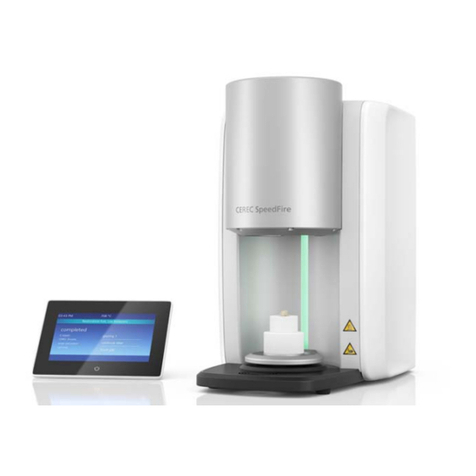
Dentsply Sirona
Dentsply Sirona CEREC SpeedFire operating instructions
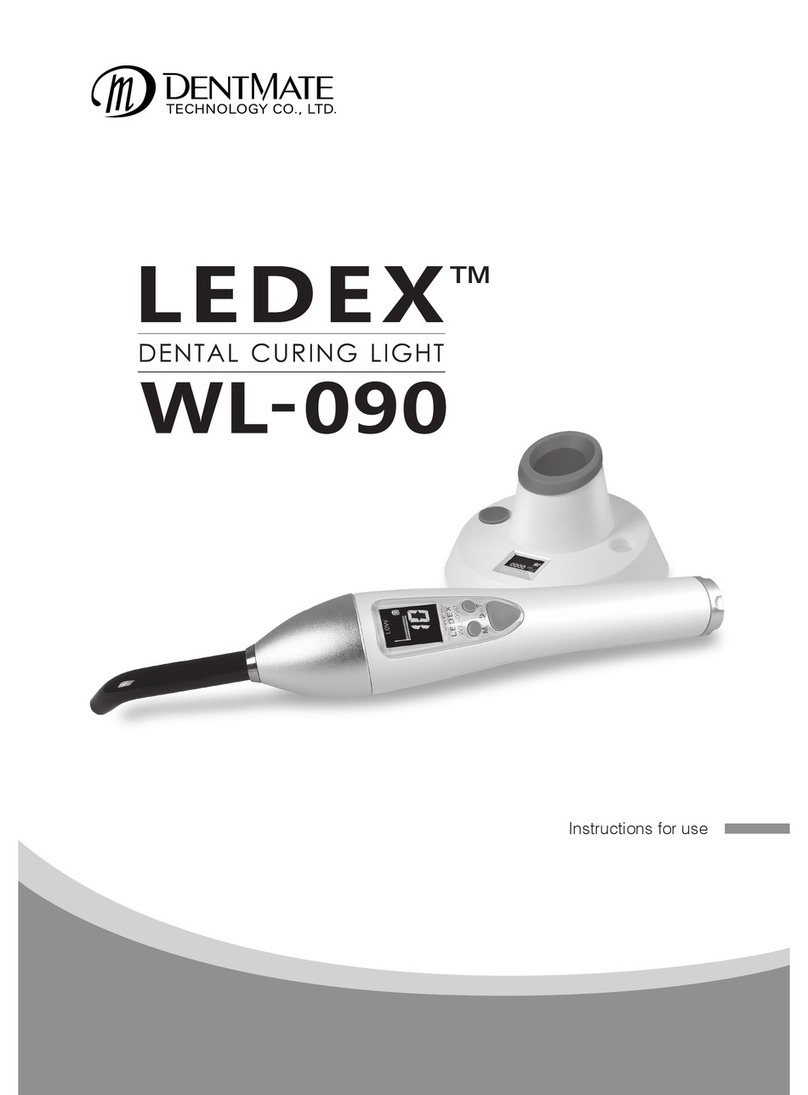
Dentmate
Dentmate LEDEX WL-090 Instructions for use
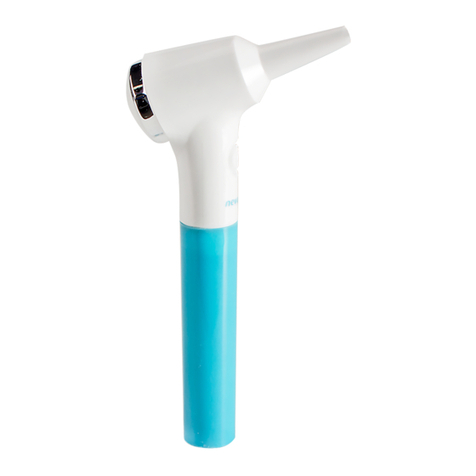
Nevadent
Nevadent NZPS 3 A1 operating instructions
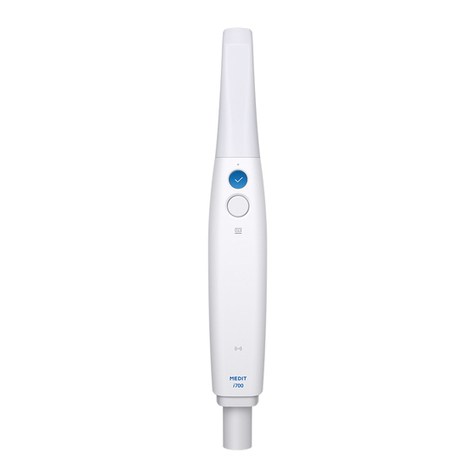
Medit
Medit i700 manual
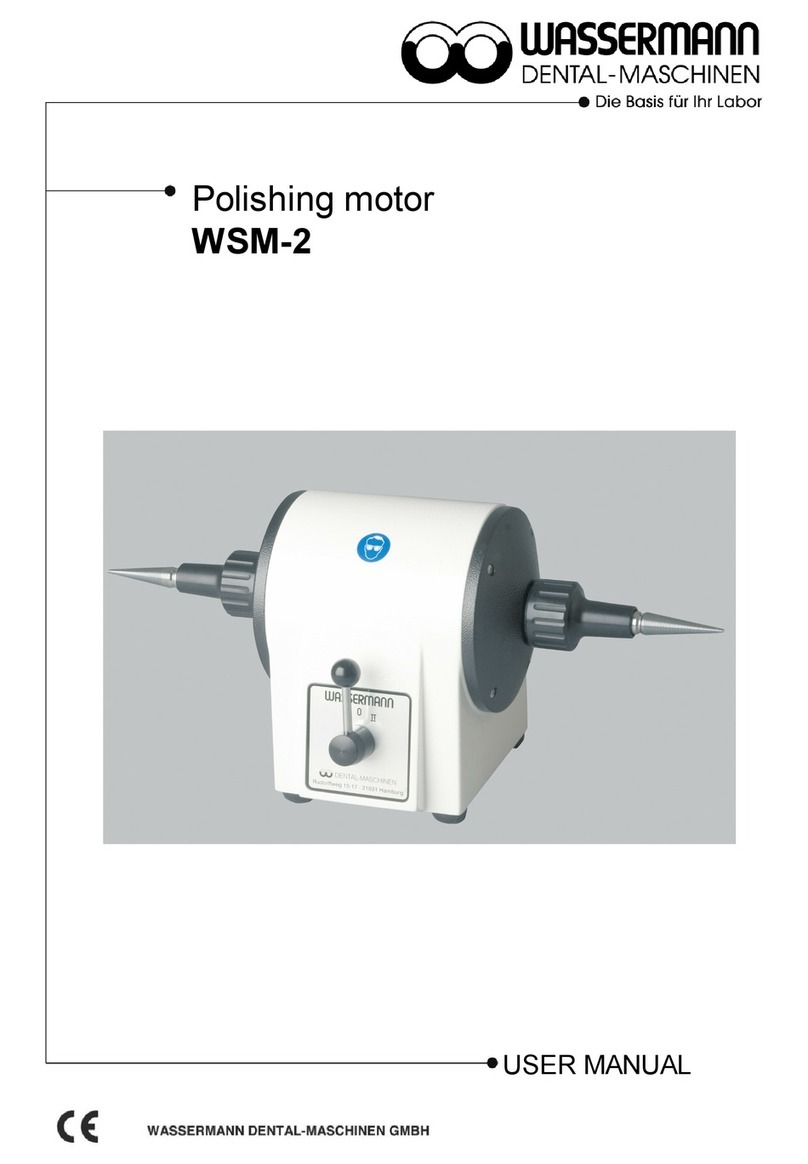
Wassermann Dental-Maschinen
Wassermann Dental-Maschinen WSM-2 user manual
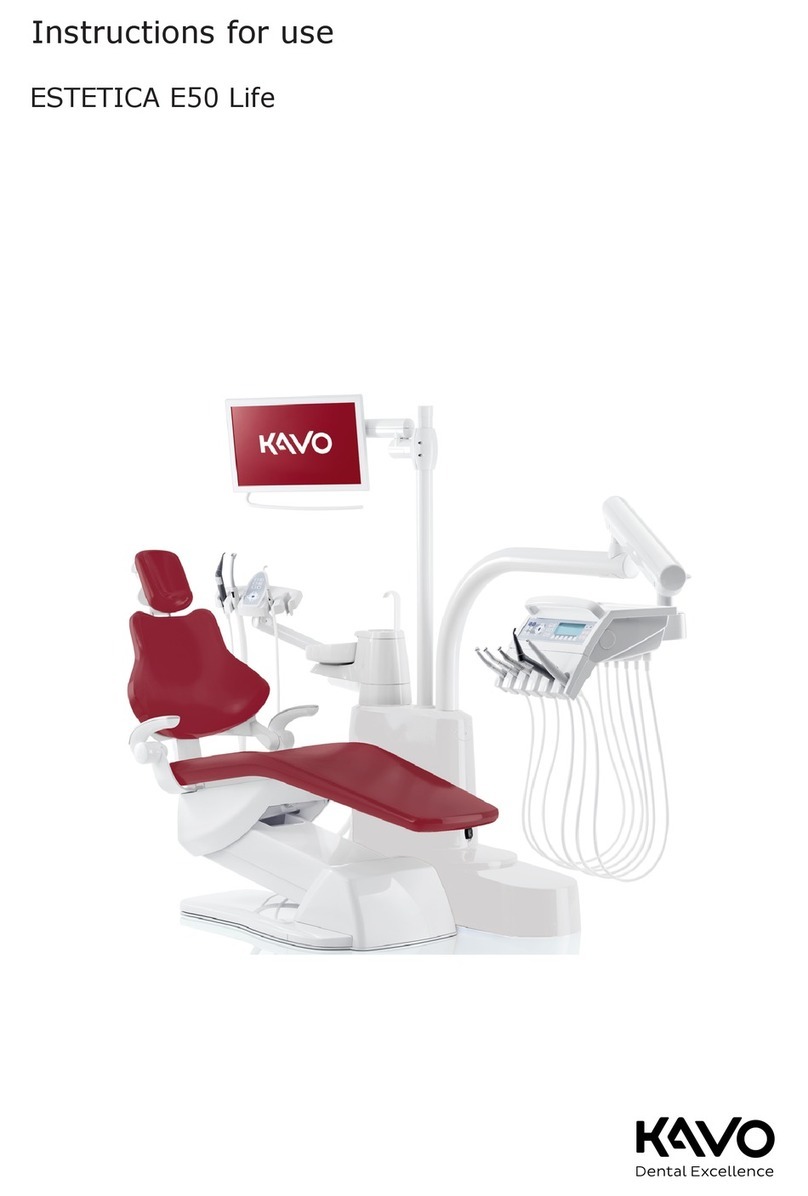
KaVo
KaVo ESTETICA E50 Life Instructions for use
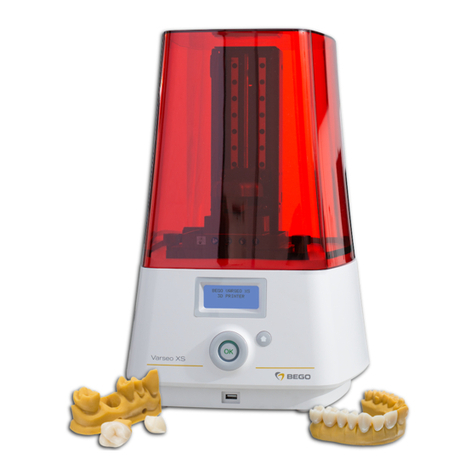
Bego
Bego Varseo XS Translation of the original operating instructions
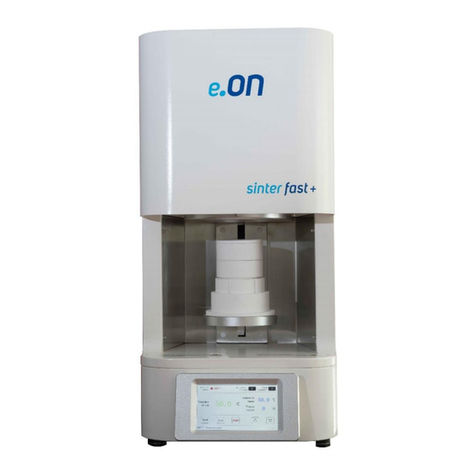
Ugin
Ugin e.ON sinter fast + Instructions for use

ARIBEX
ARIBEX Nomad Pro 2 Operator's manual

Biomet 3i
Biomet 3i Navigator Procedures manual
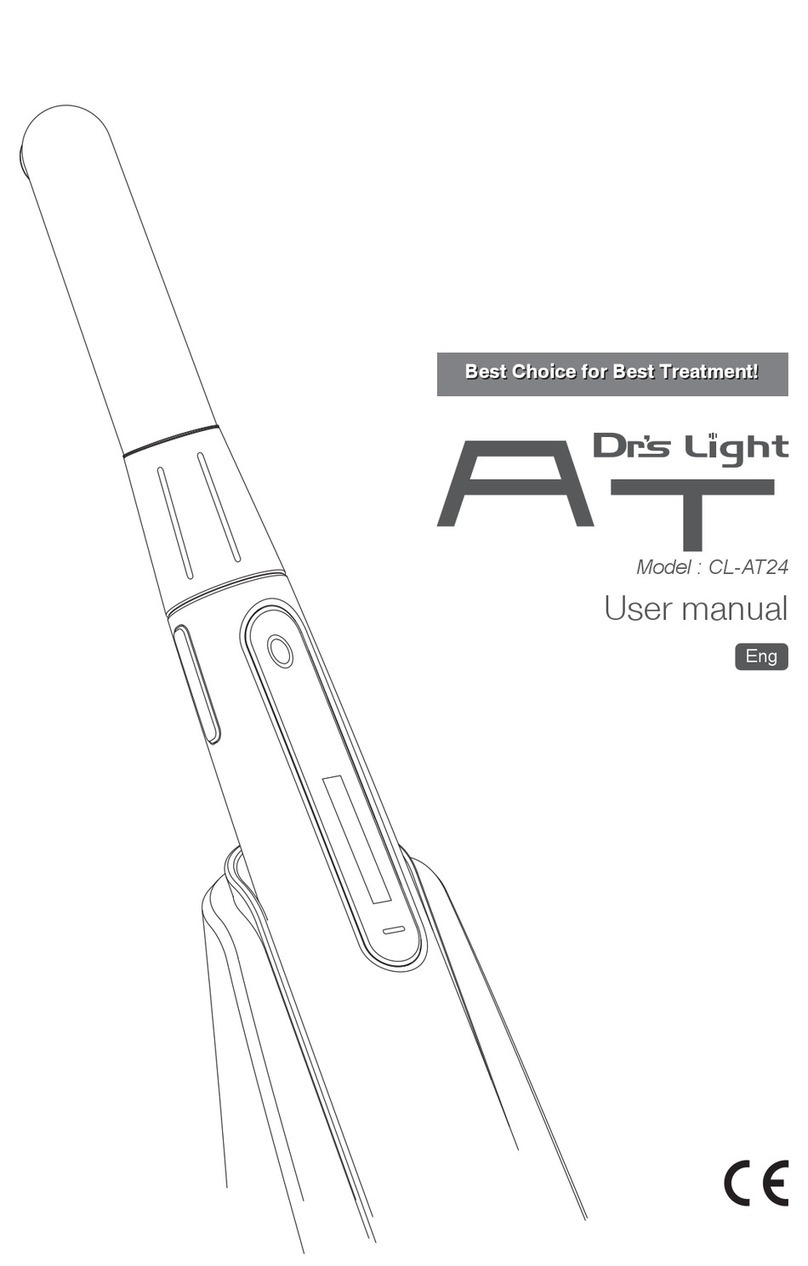
Good Doctors
Good Doctors Dr's Light CL-AT24 user manual
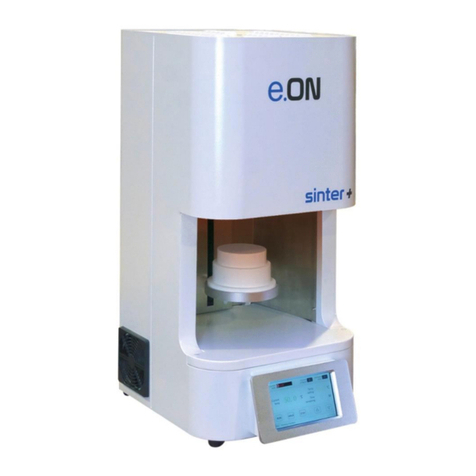
Ugin
Ugin e.ON SINTER + Instructions for use

